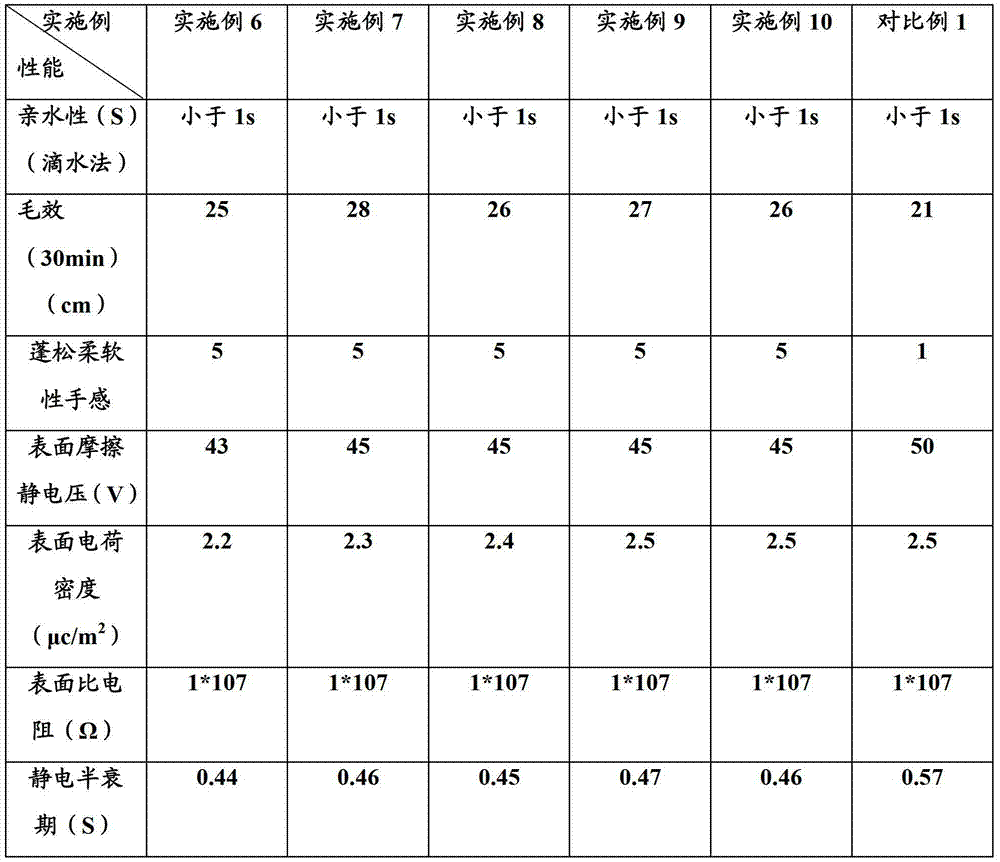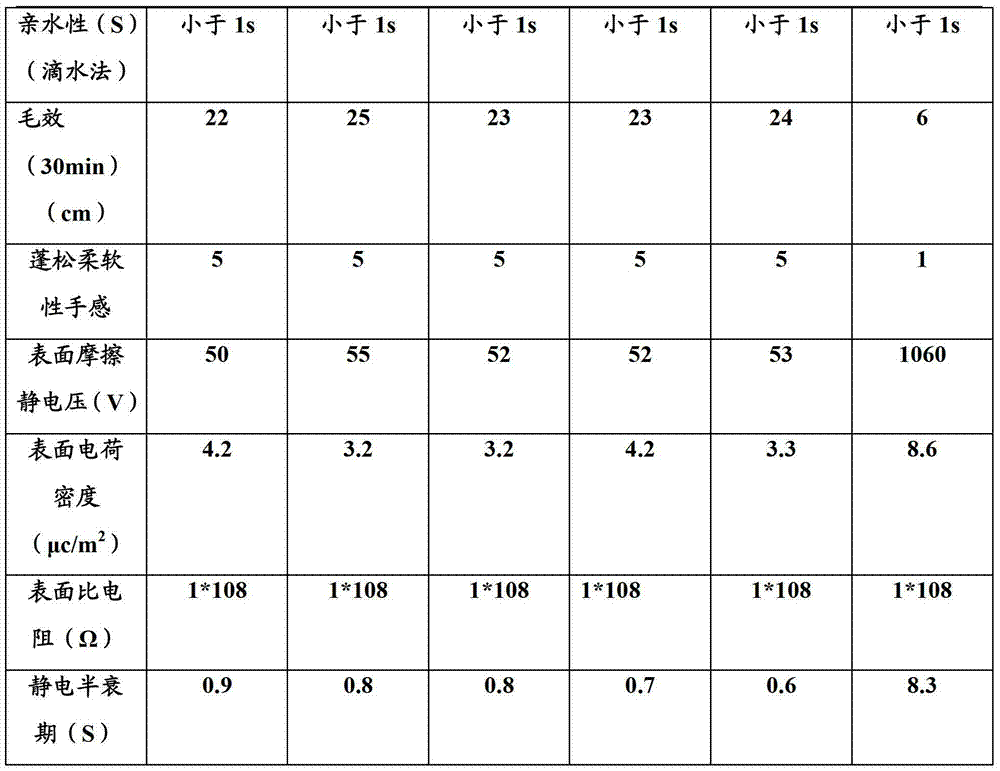Durable cationic antistatic agent for polyester fabrics and preparation method thereof
A technology of antistatic agent and polyester fabric, which is applied in the field of durable cationic antistatic agent and its preparation. It can solve the problems of poor fiber or fabric hand feeling, affecting continuous production, and large surface adhesion of equipment, so as to achieve good fluffiness. The effect of soft feeling, simple and easy preparation method, and excellent washability
- Summary
- Abstract
- Description
- Claims
- Application Information
AI Technical Summary
Problems solved by technology
Method used
Image
Examples
Embodiment 1
[0018] 1) Weigh 800 grams of polyethylene glycol, 150 grams of ethylene glycol, 180 grams of dimethyl terephthalate, 800 grams of polyamide, 10 grams of magnesium acetate; 200 grams of 1-bromododecane; isopropanol 400 grams;
[0019] 2) Put polyethylene glycol, ethylene glycol, dimethyl terephthalate, polyamide and magnesium acetate as a catalyst into the reactor, raise the temperature to 140°C and keep it for 190 minutes, continue to raise the temperature to 220°C for 70 minutes, Then carry out the polymerization reaction at a vacuum degree of -0.08MP and a temperature of 230°C to generate a block copolymer of polyester polyether polyamide with a number average molecular weight of 5000-6000, and discharge the material after cooling down to 190°C;
[0020] 3) The block copolymer of polyester polyether polyamide obtained in step (2), 1-bromododecane and isopropanol as a solvent were refluxed at 82°C for 6 hours, and then heated at -0.01 The isopropanol was distilled off by MP ...
Embodiment 2
[0022] l) Weigh 900 grams of polyethylene glycol, 140 grams of ethylene glycol, 170 grams of dimethyl terephthalate, 700 grams of polyamide, 7 grams of zinc acetate; 220 grams of 1-bromohexadecane; isopropanol 400 grams;
[0023] 2) Put polyethylene glycol, ethylene glycol, dimethyl terephthalate, polyamide and zinc acetate as a catalyst into the reactor, raise the temperature to 150°C for 160 minutes, and continue to heat up to 210°C for 60 minutes, Then carry out a polymerization reaction at a vacuum degree of -0.08MP and a temperature of 240°C to generate a block copolymer of polyester polyether polyamide with a number average molecular weight of 8000-9000, and discharge the material after cooling down to 200°C;
[0024] 3) The block copolymer of polyester polyether polyamide obtained in step (2), 1-bromohexadecane and isopropanol as a solvent were refluxed at 82°C for 6 hours, and then heated at -0.01 The isopropanol was distilled off by MP under reduced pressure to obtai...
Embodiment 3
[0026] l) Weigh 700 grams of polyethylene glycol, 160 grams of ethylene glycol, 190 grams of dimethyl terephthalate, 900 grams of polyamide, 8 grams of calcium acetate; 240 grams of 1-bromooctadecane; isopropanol 400 grams;
[0027] 2) Put polyethylene glycol, ethylene glycol, dimethyl terephthalate, polyamide and calcium acetate as a catalyst into the reactor, raise the temperature to 180°C and keep it for 180 minutes, continue to raise the temperature to 210°C for 60 minutes, Then carry out the polymerization reaction at a vacuum degree of -0.09MP and a temperature of 280°C to generate a block copolymer of polyester polyether polyamide with a number average molecular weight of 14,000 to 15,000, and discharge the material after cooling down to 200°C;
[0028] 3) The block copolymer of polyester polyether polyamide obtained in step (2), 1-bromooctadecane and isopropanol as a solvent were refluxed at 82°C for 6 hours, and then heated at -0.01 The isopropanol was distilled off ...
PUM
 Login to View More
Login to View More Abstract
Description
Claims
Application Information
 Login to View More
Login to View More - R&D
- Intellectual Property
- Life Sciences
- Materials
- Tech Scout
- Unparalleled Data Quality
- Higher Quality Content
- 60% Fewer Hallucinations
Browse by: Latest US Patents, China's latest patents, Technical Efficacy Thesaurus, Application Domain, Technology Topic, Popular Technical Reports.
© 2025 PatSnap. All rights reserved.Legal|Privacy policy|Modern Slavery Act Transparency Statement|Sitemap|About US| Contact US: help@patsnap.com



